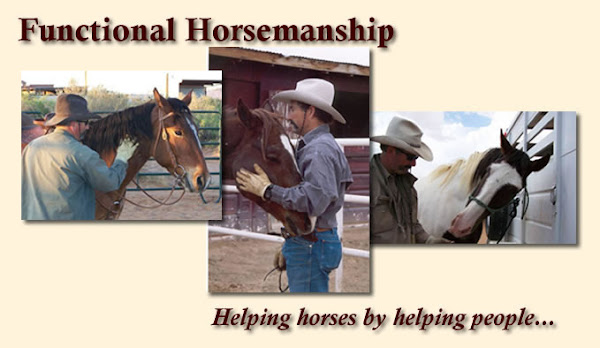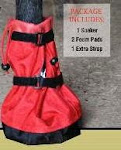We concluded the 9th Annual Functional Horsemanship Arena Challenge with the smallest number of riders to date with 17 Entries across the four competitive divisions of Stockhorse, Open, Intermediate and Novice. Four people pulled prior to the competition due to injuries/sickness and five riders did not show. Despite the small turnout, the day went on without a hitch, the higher than normal temperatures for this time of year and solar eclipse weren't much of a factor. When it was all said and done the division winners were: Stockhorse - Debby Hale (pictured above right); Open - LuAnne Benally; Intermediate - Gena Blankenship; and Novice - Mark Schleicher. The Horsemanship Award, which I think is the highest award, voted on by competitors and judges, went to Mikayla Loveland, a first time competitor at this event. That's Mikayla below backing straight through an open gate, and yes, her horse is that big, over 17 hands.
Final placement and scores in each division were:
Stockhorse: Debby Hale 620; Don Carpenter 577; LuAnne Benally 567; Jessica Bailey 537; Mark Schleicher (riding two different horses) scored 463 and 445
Open: LuAnne Benally 601; Erin Weich 587
Intermediate: Gena Blankenship 534; Marianne Bailey 525; and Nikol Endres 446
Novice: Mark Schleicher 277; Dan Bailey 240; Mikalya Loveland 223; Jessica Bailey 219; Edith Deleski 196; and Shelly Clark 161
To keep tasking the riders with new skills, several new requirements were added for this year's challenge in the Stockhorse division including a hip shot, scoop loop and tying knots requirements. The Stockhorse division is heavy with rope skills as the riders also had to throw a head shot, trap shot, rope a barrel and trot around it stacking coils, and trot off pulling a heavy log. The three knots each rider had to tie were a clove hitch with one piece of rope, a bowline with a second piece of rope, then tie both ropes together with a double sheet bend. Jessica Bailey was the only rider to tie all three knots correctly. LuAnne Benally is shown below tying her knots.

The Open division harder tasks were riding the trot in tight circles and a 50 foot serpentine backup. Open, Intermediate and Novice were also tasked with a dismount and remaining in a box while backing their horse up with a soft feel. L shaped and straight side passing, 360 and 180 degree turn on the hocks, navigating a cowboy (rope) curtin, opening and closing gates were some of the other tasks riders and their horses had to perform. Mark Schleicher shown below negotiating the gate.

After the conclusion of the competition, a lunch of street tacos, rice, corn, beans and peach cobbler was served then the awards ceremony. In addition to a plaque and ribbon for each division winner, as well as a trip to the well stocked prize table, the Stockhorse winner received $200 in Starr Western Wear gift cards; the Open winner received a $100 Boot Barn gift card and a sterling silver ribbon pendent with turqiouse and silver necklace made and donated by jewrely maker Tami Rafoul of San Antonio. The Intermediate division winner received a $100 Boot Barn gift card. The Horsemanship Award winner received a Painted Pony statute as well as a $100 Starr Western Wear and $100 Boot Barn gift card. This year we gave Vicky Maly of VCM Equine Services a sterling silver horse head pendant and silver chain, also made and donated by Tami Rafoul, for her lifelong commitment to the greater El Paso horse community.


















































